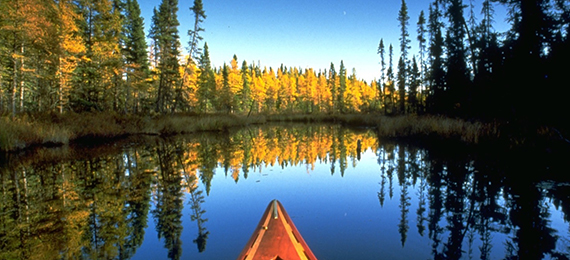Get Wild with Our Interesting Voyageurs National Park Trivia
Elmira | 04 - 02 - 2021
Updated: February 4, 2021 11:00 pm IST
Discover voyageurs National Park facts to gain more knowledge. It is full of forests, with 84,000 acres of water, and consists of approximately 1000 islands and is the best place for canoeing, boating, fishing, and hiking. National Park is situated in northern Minnesota, near the Canadian border. French-Canadian fur tradesmen (who were the first European settlers) mainly used to travel through the area. The park is famous for its rich resource of water and is the most memorable wildlife observation. If you want to enjoy visiting forests, waterways, Ellsworth Rock Gardens, Kabetogama, and Namakan lakes, you should take a few minutes to participate in our fun Voyageurs National Park quiz to expand your knowledge. This quiz includes all the important Voyageurs national park facts so that you can impress your friends and family by sharing your knowledge. Take our mind-blowing Voyageurs National Park trivia now and see where you stand!!
1. How Many Hiking Trails Does Voyageurs National Park Have?
Voyageurs National Park consists of nine hiking trails stretching from 1.7km to 27.9km in length.
2. How Many Acres Is Voyageurs National Park?
Voyageurs National Park stretches 218,054 acres and is known as the best water-based park. The park contains wildlife including deers, moose, wolves, beavers, coyotes, and many other varieties of birds.
3. What Animals Live in Voyageurs National Park?
Animals like double-crested cormorants, bald eagles, loons, owls, and warblers live in the park. The most common species that live in the park are the northern pike and yellow perch.
4. What Will You Discover on the Kabetogama Peninsula?
Kabetogama Peninsula is a roadless land with a surface area of 75,000-acres, and you can find a variety of wildlife in the park.
5. When Were French Canadian Frontiersmen Involved in Fur Trading?
French Canadian frontiersmen (also known as voyageurs) were involved in fur trading during the late 18th and early 19th centuries.
6. When Was the Voyageurs National Park Established?
Voyageurs National Park was constructed in 1975 in northern Minnesota. This American national park lies along the Canadian border, which is east of International Falls.
7. How Many Largest Lakes Are There in Voyageurs National Park?
There are four largest lakes in Voyageurs National Park that includes Sand Point Lake, Rainy Lake, Namakan Lake, and Kabetogama Lake.
8. Voyageurs National Park Is Named after Voyageurs from_________ Country.
Voyageurs National Park got its name to honor the travelers who traveled from Montreal to Alberta, Canada. During the late 18th and early 19th centuries, they paddled birchbark canoes for fur trading companies.
9. Voyageurs National Park Is Covered With_______.
Voyageurs National Park is covered with water and called the water-based park. The park is recognized for several cultures, the Native American lifestyle, the fur trade, and European settlement.
10. What Is the Meaning of the French Word Voyageurs?
Voyage is a French word meaning ‘traveler' in English. The French Canadian used to travel through the area for fur trading. Hence they were called voyageurs.
11. Are There Moose in Voyageurs National Park?
Voyageurs National Park is one of the American national parks where you can see moose, and they live in the Kabetogama Peninsula.
12. What Kind of Trees Can you See in Voyageurs National Park?
Some of the common trees found in the park are fir, spruce, paper, aspen, oak, pine, maple, and basswood.
13. Are There Bears in Voyageurs National Park?
The park has about 150 black bears. They symbolize the wilderness quality of northern Minnesota.
14. What Are the Top Attractions to Visit in Voyageurs National Park?
Rainy Lake, Ash River Visitor Center, Kabetogama Peninsula, Ellsworth Rock Garden, and Crane Lake are known as the top tourist attractions in Voyageurs National Park.
15. Who Created the Ellsworth Rock Gardens?
The Ellsworth Rock Gardens is created byJack Ellsworth. He utilized the natural elements of the native northern Minnesota scenery. He created a terraced garden on a famous rock outcrop.
